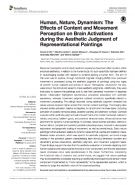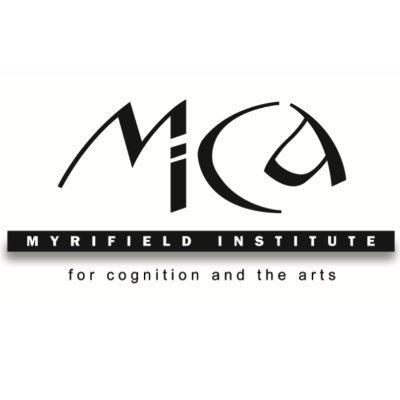
Last paper:
Grazia Pulvirenti, Renata Gambino, Neurohermeneutics. A Transdisciplinary Approach to Literature
- Peer review
- Submit a paper
- Suggest a paper
- Contact us
- Partner program
Cinzia Di Dio, Vittorio Gallese, Martina Ardizzi, Davide Massaro, Giuseppe Di Cesare, Gabriella Gilli, Antonella Marchetti,
Human, Nature, Dynamism: The Effects of Content and Movement Perception on Brain Activations during
 Source: Frontiers in Human Neuroscienc
Source: Frontiers in Human NeurosciencYear: 2016
Disciplines: Aesthetics; Fine Arts;
DOWNLOAD PAPER
Download size: 3.76 MB
Movement perception and its role in aesthetic experience have been often studied, within empirical aesthetics, in relation to the human body. No such specificity has been defined in neuroimaging studies with respect to contents lacking a human form. The aim of this work was to explore, through functional magnetic imaging (f MRI), how perceived movement is processed during the aesthetic judgment of paintings using two types of content: human subjects and scenes of nature. Participants, untutored in the arts, were shown the stimuli and asked to make aesthetic judgments. Additionally, they were instructed to observe the paintings and to rate their perceived movement in separate blocks. Observation highlighted spontaneous processes associated with aesthetic experience, whereas movement judgment outlined activations specifically related to movement processing. The ratings recorded during aesthetic judgment revealed that nature scenes received higher scored than human content paintings. The imaging data showed similar activation, relative to baseline, for all stimuli in the three tasks, including activation of occipito-temporal areas, posterior parietal, and premotor cortices. Contrast analyses within aesthetic judgment task showed that human content activated, relative to nature, precuneus, fusiform gyrus, and posterior temporal areas, whose activation was prominent for dynamic human paintings. In contrast, nature scenes activated, relative to human stimuli, occipital and posterior parietal cortex/precuneus, involved in visuospatial exploration and pragmatic coding of movement, as well as central insula. Static nature paintings further activated, relative to dynamic nature stimuli, central and posterior insula. Besides insular activation, which was specific for aesthetic judgment, we found a large overlap in the activation pattern characterizing each stimulus dimension (content and dynamism) across observation, aesthetic judgment, and movement judgment tasks. These findi
Project
The Neuro Humanities Studies Network aims at creating a multidisciplinary research community in order to develop and structure a linking platform for neuro-scientific, cognitive topics and humanities.
Click on each keyword to show papers related with it.









